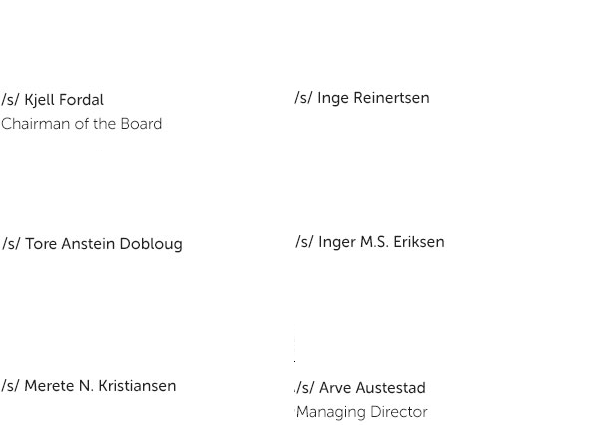Boligkreditt Annual Report 2016
Statement of the board of directors
Cover pool and outstanding covered bonds
The cover pool consists of residential mortgages and liquid, highly rated assets (substitute assets).
The amount of liquid assets varies over time and the variation is solely a result of the Issuer’s liquidity risk management (and regulatory requirements), whereby upcoming redemptions are refinanced early (up to 12 months) with proceeds held as liquid assets (please see the investor reports for details on the composition of liquid assets). Covered bonds are shown inclusive of the market value of the derivatives deployed to hedge currencies and interest rates.
Key figures
| Q4 2016 | Q3 2016 | Q2 2016 | Q1 2016 | Q4 2015 | |
|---|---|---|---|---|---|
| Weighted Average Current LTV (%) | 51,1 % | 49,9 % | 49,9 % | 51,4 % | 52,1 % |
| Weighted Average Original LTV (%) | 59,4 % | 59,0 % | 58,7 % | 58,7 % | 58,7 % |
| Average Loan Balance (NOK) | 1 322 732 | 1 306 717 | 1 286 759 | 1 272 036 | 1 251 680 |
| Number of Mortgages in Pool | 131 743 | 132 397 | 133 840 | 135 432 | 134 895 |
| Pct. of non first-lien mortgages | 0,0 % | 0,0 % | 0,0 % | 0,0 % | 0,0 % |
| Overcollateralization | 108,8 % | 108,6 % | 109,0 % | 108,6 % | 110,4 % |
Key developments in 2016
SpareBank 1 Boligkreditt issued two EUR benchmark covered bonds in 2016 with maturities of 7 and 10 years (in the first and third quarter, respectively) for a total issuance of Euro 2 billion.
The bonds were well received in the market with considerable oversubscription levels. Norwegian krone issuance amounted to 13.3 billion throughout the year in various maturities. Issuances in other currencies did not take place.
The residential lending volume has increased moderately as expected by approximately 3 per cent over 2016. This must be seen in connection with a moderate growth in the lending activities of the parent banks and an increase in the same banks’ deposit base, as well as other issuances at the parent bank level. The expectation for 2017 is also growth of 3 per cent for residential mortgages in the cover pool based on updated forecasts from the SpareBank 1 banks at the beginning of 2017.
In the market for the Company’s bonds the credit spreads have generally contracted with the market, especially during the second and third quarters.
Boligkreditt is well capitalized with a capital coverage ratio of 16.52 per cent measured against a total capital requirement of 15.0 per cent, in addition to a moderate capital requirement for Pillar 2 requirements. Total Tier 1 capital is 14.34 and core equity capital 12.87 per cent.
The Norwegian krone, which had previously declined following the change in oil prices strengthened again over 2016 by approximately 6 per cent against the Euro. This, in addition to the repayment of maturing bonds in currency and the associated maturing of older swaps contracts hedging these bonds, lead to a reduction in the value of derivatives and the amount of collateral held under the derivatives contracts on the balance sheet. The Company is maintaining separate accounts for liquid assets posted to it as collateral and for assets which is a part of the Company’s own liquidity portfolio.
SpareBank 1 Boligkreditt has a negative result for 2016 as a whole. This is entirely due to the change in basis swap valuation adjustments, an accounting requirement, which does not impact cash flows and earnings and reverse to zero over time. The pre-tax result which was negative 146 million is a positive 154 million without accounting for the basis swap change. The Company’s operating model is to pay out to the parent banks who sell mortgages to the Company the margin earned during the course of the year (commissions to the parent banks). These commissions are deducted in the financial accounts to calculate net income.
Nature and development of the Company’s business
SpareBank 1 Boligkreditt AS is a credit institution licensed by the Norwegian Financial Services Authority (Finanstilsynet) and is operated according to the legislation for covered bond issuers in Norway which is included in the law regarding financial enterprises (“Finansieringsvirksomhetsloven”) chapter 2, section IV and the detailed regulations thereof.
The purpose of the Company is to provide funding for the owners by buying residential mortgage loans with a loan-to-value (“LTV”) of up to 75 per cent and financing these primarily through the issuance of covered bonds. The Company which is based in Stavanger, is owned by banks which are members of the SpareBank 1 Alliance. A comprehensive agreement is signed which each of the banks in the SpareBank 1 Alliance which are selling mortgages to the Company regarding the purchasing process and the obligations which the banks owe the Company and its mortgage customers (“Transfer and Servicing Agreement”, “TSA”).
The Company’s issuances of covered bonds mainly take place under the EUR 25,000,000,000 Global Medium Term Covered Note Programme (GMTCN Programme). This Programme was updated on June 10, 2016 and is available on the Company's home page: https://spabol.sparebank1.no.
One or more credit ratings from international rating agencies are important in order to be able to issue covered bonds. The Company have procured the services of Moody’s Ratings Service and Fitch Ratings to evaluate the credit quality of the issuances under the GMTCN Programme. The bond ratings are Aaa from Moody’s and AAA from Fitch.
Annual accounts
The annual accounts have been prepared in accordance with the International Reporting Standards (IFRS) as adopted by the EU and published by the International Reporting Standards Board (IASB).
The Board views the accounts as presented to be a true representation of SpareBank 1 Boligkreditt’s operations and financial position at the end of the year. Numbers in brackets refer to the previous year for comparison.
The total balance sheet at year-end 2016 amounts to 252 (269) billion kroner. The reduction is largely due to a decline in the value of derivatives used for hedging issued bonds and declines in associated collateral levels held. The Company had in 2016 net interest income of 410 (407) million kroner, deducting also commissions paid to the parent banks to arrive at net interest income. The cost of operations for the year was 35.3 (33.1) million kroner including depreciation and amortization. No additional amounts have been charged as loan provisions (write offs) in 2016 beyond the approximately 8 million kroner which has been reserved from previous years. No actual loan losses have occurred since the Company commenced operations. This produces an operating result of negative 146 million kroner (positive 608) before tax. The operating result includes a loss due to basis swap valuation adjustments of approximately 300 million kroner. Basis swap valuation adjustments are temporary effects reversed over time until maturity of the swaps.
Lending to customers amounted to 174 (169) billion kroner as of 31.12.16. Even though some mortgage loans have been sold back to the Company’s parent banks during the year as a part of normal operations, there has been an expected though moderate increase of mortgage loans during the year. The Company’s own liquid assets as of December 31, 2016 were 26.3 (21.9) billion kroner. Liquid assets are cash and highly rated, highly liquid bonds which are held as a function of upcoming bond maturities up to 12 months ahead in time.
Risk aspects
SpareBank 1 Boligkreditt as an issuer of covered bonds is subject to strict rules regarding its exposure to credit, market, and liquidity risks. This fact and the aim of the maintenance of the AAA/Aaa rating means that the Company is subject to low levels of risk and places strong emphasis on risk control.
Credit Risk is defined as the risk that losses can occur as a consequence of that customers and others do not have the ability or willingness to meet their obligations to SpareBank 1 Boligkreditt. Because the Company buys residential mortgages within 75% of the value of the objects on which the mortgages are secured, the Board of Directors conclude that the credit risk is lower than for banks in general.
Market risk is defined as the risk of losses due to changes in market rates, i.e. interest rates, exchange rates and the prices of financial instruments. At the end of the year SpareBank 1 Boligkreditt AS had issued bonds for approximately 120 billion kroner in EUR, 30 billion kroner in USD and 0.3 billion kroner in Swedish kroner, at exchange rates at year-end. However, all borrowing and investments with a fixed rate and all borrowing and investments in a foreign currency have been hedged by financial currency- and/or interest rate swap agreements or through natural hedges. The collective cash flow therefore matches borrowings in Norwegian kroner with floating rate conditions (NIBOR 3 months). The Company receives collateral from its counterparties in derivative agreements according to certain criteria.
SpareBank 1 Boligkreditt AS owns bonds and treasury bills at year-end for a total of NOK 50.6 (58.8) billion kroner, whereof 24.3 (37.0) billion kroner is collateral received from counterparties in derivatives transactions and are not available for the Company as liquid assets. The bonds are mainly Nordic covered bonds and German supra sovereign and agencies (German agencies guaranteed by the German government) with a triple-A rating from Fitch, Moody's or S&P. Deposits are placed in banks with a minimum rating of at least A/A2.
The Company had as of 31.12.2016 only moderate interest rate risk and immaterial amounts of currency risk.
Liquidity risk is defined as the risk that the Company is not able to meet its obligations at maturity or to be able to finance the purchase of loans at normal terms and conditions. Liquidity risk is managed based upon a liquidity strategy approved by the Board. According to the strategy, SpareBank 1 Boligkreditt AS shall maintain a material liquidity reserve with a minimum size of covering all maturities within 6 months and 50 per cent of all maturities between 6 and 12 months. Additionally the Company shall at any point in time be able to meet its interest payments, including derivatives, which come due in the next three months under a scenario where no interest payments are received from the loan portfolio. SpareBank 1 Boligkreditt AS’s liquidity situation is good.
Operational risk is defined as risk of loss due to error or neglect in transaction execution, weakness in the internal control or information technology systems breakdowns. Reputational, legal, ethical and competency risks are also elements of operational risk. The risk is assessed to be moderate.
The Company spends much time identifying, measuring, managing and following up central areas of risk in such a way that this contributes to meeting the strategic goals. The notes 23 to 27 in the annual report provides further information.
Employees and the working environment
SpareBank 1 Boligkreditt had eight employees as of 31.12.2016.
The working environment is characterised as good and there is no pollution of the physical environment. There has been 0.2% employee absence recorded in 2016 due to sickness. No workplace accidents which might have resulted in property and/or damage to any persons have occurred or been reported during the year.´
The Board consists of five persons of which three are male and two are female. SpareBank 1 Boligkreditt AS strives to achieve an even distribution between the genders in recruiting for the staff and the Board.
At the establishment of SpareBank 1 Næringskreditt AS which represents a similar type of business activity to that of SpareBank 1 Boligkreditt AS, it was decided that the two companies will have identical staffing. Of the eight full time employees which in 2016 have been employed in SpareBank 1 Boligkreditt AS, 1.6 full time equivalents have been allocated to SpareBank 1 Næringskreditt AS. The Boards of the two companies have joint meetings, where the members associated with one of the companies take the role of observers when matters of the other Company are discussed.
Corporate governance
SpareBank 1 Boligkreditt’s principles for corporate governance is based on the Norwegian accounting law and regulations and the Norwegian practice for corporate governance.
The Board of Directors has appointed an audit committee which evaluates the Accounts inclusive of the Notes to the Accounts. The Board of Directors reviews the financial reporting processes in order to contribute to a culture which maintains a focus on quality and accuracy of this work. Boligkreditt seeks to deliver through its financial accounting relevant and timely information which can be compared over time to constituents in the SpareBank 1 Alliance, regulatory authorities and participants in the capital markets. The Board evaluates and approves Management’s proposed annual and quarterly financial accounts.
Boligkreditt maintains an administration which is suitable for the purposes, activities and extent of the business. The Management routinely evaluates internal procedures and policies for risk and financial reporting including measuring the results and effectiveness of the procedures and policies. Any breaches in the policy and procedures are reported continuously to the Board of Directors. Management is also responsible for following up and implementing actions, recommendations and new rules from the regulatory authorities.
The Company publishes its Corporate Governance policies in a document available on the Company’s website www.spabol.no. With regards to that the Company has a single purpose and that the shares are not freely tradeable nor listed on an exchange it is the Company’s opinion that any deviations to the policies are immaterial.
Shareholders
According to the Articles of Association 2 “The shares can only be owned by banks under contract with the Company for managing the Company’s lending funds.” Entering into such agreements is decided by the Board or the General Meeting.
Neither the Company nor employees own shares in the company. A shareholders agreement which all shareholders and the Company are parties to, it is agreed that the Company’s shares will be reallocated at least annually and in relation to the mortgage volume transferred to the Company by each shareholder. The shareholders are obliged to vote for any possibly private placements to new banks that have transferred mortgages to the Company. In case of a rights issue, the shareholders are obliged to subscribe shares according to its share of the shareholdings.
The Company is not party to agreements which come into force, are amended or terminated as a result of a takeover bid.
Social responsibility
SpareBank 1 Boligkreditt is a specialized issuer of covered bonds and has, despite the size of its balance sheet, a very limited activity with eight full time employees.
The nature of the business consists solely of buying residential mortgage loans from its shareholder banks in the SpareBank 1 Alliance, and to finance this activity by issuing covered bonds. The banks in the SpareBank 1 Alliance are regular banks in the Norwegian market with an array of activities, including lending to businesses and households. The parent banks set lending policies, service and handle all customer activity (including the customers whose mortgage loans have qualified for and been sold to the Company). While the Company is legally entitled to set its own terms for the mortgages it owns, this is in practice done by the parent banks, who, in conjunction with the Company have agreed a set of qualifying criteria for which loans may be sold to the Company. Because all customer facing activity, including lending policies are set by the parent banks we make a reference to the annual accounts of the banks for a closer description of the social responsibility of SpareBank 1. The Company, within its limited scope and role as funding unit for the banks thus chooses not to maintain special guidelines and principles tied to social responsibility.
Future prospects of the Company
The Company has a portfolio of residential mortgage lending with an average loan to value of approximately 50 per cent and no loans are in default.
Residential real estate prices have increased overall in Norway by more than 12 per cent over the year 2016 and stand at a high level. However, there are large regional differences. Houses prices in Oslo, the Norwegian capital have been surprisingly strong with growth of on average 23 per cent over 2016. This outlier development in the capital which is driven by population growth through urbanization and the fact that Oslo is a major jobs and education centre, has also been fuelled by low mortgage rates. Mortgages rates have been trending lower throughout the year, though this development driven by competition in the lending market between banks has come to a halt as 2017 has started. Banks are now starting to increase residential mortgage rates based on the relatively compressed level of customer interest rates compared to the banks’ own funding costs where the money market rate (3 months NIBOR) which is the funding cost base has been less reflective of the central bank policy rate (currently and for most of 2016 0.5 per cent) and more dependent on USD rates swapped to NOK, i.e. it has remained higher than expected.
Together with a reverse of trend in mortgage interest rates, the government has for the first time responded with specific rules for mortgage lending in Oslo, which are stricter than in the rest of the country, and these became effective on January 1, 2017. The vigilant regulatory authorities have also added a new national restriction, which restrict any borrowers’ maximum debt to gross income relationship to a factor of 5. This may be particularly effective in the capital due to the relatively high level of residential prices. All lending in Norway remains (as before) subject to an 85 per cent loan to value cap and all mortgage applications (with variable rates) must be affordability tested against an increase in mortgages rates of 5 percentage points. In addition, any mortgage above 60 per cent loan to value have mandatory amortization requirements.
SpareBank 1 Boligkreditt’s portfolio of mortgages and the houses which secure them are diversified because the banks which originate them are located in different regional centres all over Norway. This means that an index of SpareBank 1 house price development has not increased as much as the national index. The national index is also transactional weighted, meaning that the index is heavily influenced by the apartment market in the capital where much of the transaction volume is. SpareBank 1 lending is more weighted towards families in detached houses in major cities outside of Oslo, and overall SpareBank 1 Boligkreditt has less than 9 per cent of its loans in Oslo.
Due to the high degree of diversification and the continued strength of the Norwegian economy as well as prudent lending practices in place, the prospects for the Company are considered to be good and stable. The Board also base this conclusion on the low LTVs of the mortgages, no defaults or arrears, a strong history and institutional framework in Norway for loan performance, as well as the low unemployment environment.
Macroeconomic development:1
The Norwegian economy expanded in the third quarter 2016 by 0.8 per cent (4th quarter not yet available at the time of writing) compared to the same period in 2015, following a 2 percent increase and a negative 0.5 per cent change in the first and second quarters, respectively. Both private sector investment as well as private (household) consumption shows good growth and is probably indicative of a recovery from a period of weaker development following the downward shift in oil prices. The combination of a depreciated krone helping trade, low interest rates giving impetuses to investment and fiscally expansive policies have probably effectively counter balanced the negative demand impulses from the petroleum sector where investments and activity have been steeply declining since 2014. The unemployment rate stands at 4.8 per cent in Norway, essentially stable from a year ago.
1 Macroeconomic projections have been sourced from Statistics Norway as of November 29, 2016.
Economic outlook:
The economic outlook is summarized in the table below. The outlook for the full year economic growth for 2016 at 0.7 per cent real growth is the lowest since 2009.
The current economic downturn has been dampened by interest rate cuts and a weaker krone. An expansionary fiscal policy has also contributed. In 2017, the decline in petroleum investment which have been ongoing since 2014 will probably come to a halt. Oil prices have also increased significantly since the bottom in 2015. Continued expansionary impulses from fiscal and monetary policy are expected to contribute to slightly higher growth in household consumption and business investment in 2017. The Norwegian economy as a small and open trading economy will be boosted by the international economy, although the development here is now more uncertain. Overall, there is an expectation of higher economic growth from 2017 onwards. The central bank’s key policy interest rate was reduced in March to a record low 0.5 per cent. Most analysts expect the rate to remain at the current level.
Increased growth in Norwegian export markets together with lag effects of improvements in competitiveness based on the weakening of the krone is expected to push exports up going forward. Measured by the import-weighted exchange rate, the krone was 6 per cent stronger in late November than at the end of last year. It is, nevertheless, almost 10 per cent weaker than the average in the 2000s and 22 per cent weaker than at its strongest in 2013.
Fiscal policies have been as mentioned expansionary since the decline in oil prices. While more funds from the Norwegian petroleum fund has been channelled for infrastructure investments and government outlays, the spending has remained well within the so called spending rule for the fund (less than 4 per cent of the funds size annually), due to the large size of the fund. However, 2017 is a general election year in Norway and it is expected that the amount of Norwegian kroner contributed to the government budget from the fund will come under scrutiny.
The investments in the mainland industries have shown a positive trend for four successive quarters, and they are expected to increase somewhat going forward. Improved growth prospects for the Norwegian and global economy, greater competitiveness and low interest rates and reduced taxes for enterprises are all factors that point in this direction.
Wage growth is low and real wage growth is negative in 2016, after a rise in prices mostly attributed to the weaker krone. Negative real wage growth is not expected to continue in 2017 and beyond.
| Forecast (%) | 2016 | 2017 | 2018 | 2019 |
|---|---|---|---|---|
| Mainland GDP growth | 0,7 | 1,7 | 2,2 | 2,1 |
| Unemployment rate | 4,7 | 4,5 | 4,4 | 4,3 |
| CPI growth | 3,6 | 2,3 | 2,1 | 2,4 |
| Annual wages | 2,2 | 2,6 | 2,9 | 3,4 |
The Board of Directors affirms that the financial accounts present a correct and complete picture of the Company’s operations and financial position for 2016. The financial accounts including notes are produced under the assumption of a going concern. 114.0 million kroner of the annual net income will be distributed as a dividend to the shareholders (basis swap adjustments do not affect distributable income). This corresponds to 1.80 kroner per share (rounded).
There have been no incidents of a material nature after year-end which are expected to impact the annual accounts for 2016.
Stavanger, 31. December 2016 / Gardermoen, 1. February 2017
The Board of Directors of SpareBank 1 Boligkreditt AS

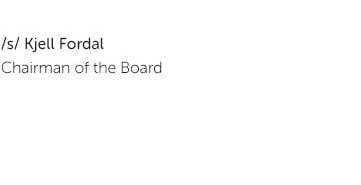

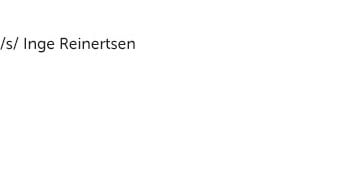

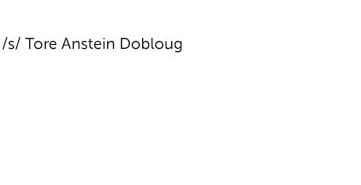
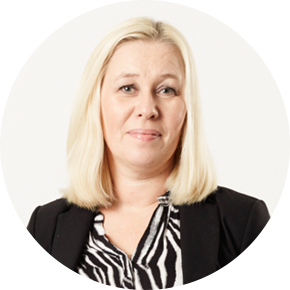


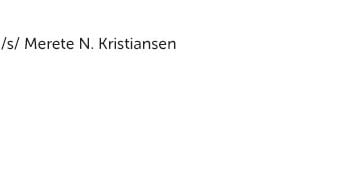

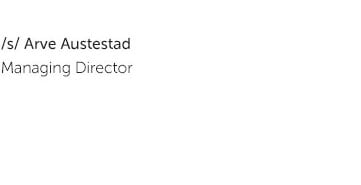
SpareBank 1 Boligkreditt AS
- Statement of the members of the board and the chief executive officer
The Board and the chief executive officer have today reviewed and approved the financial accounts for 2016 for SpareBank 1 Boligkreditt AS. The annual accounts have been prepared in accordance with the International Financial Reporting Standards (IFRS), as adopted by the EU.
To the best knowledge of the board and the chief executive officer the accounts have been prepared in accordance with applicable accounting standards and give a true and fair view of the assets, liabilities, financial position and profit or loss of the company taken as a whole as of 31.12.16.
The board of directors and the chief executive officer declare to the best of their knowledge that the annual report gives a true and fair view of the development and performance of the business of the Company, as well as a description of the principal risks and uncertainties facing the Company.
Stavanger, 31. December 2016 / Gardemoen, 1. February 2016
Members of the board, SpareBank 1 Boligkreditt AS
